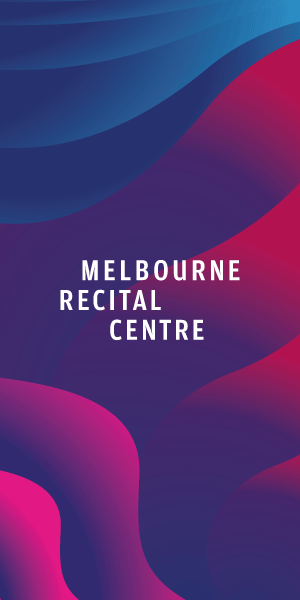Science Gallery’s first exhibition
A hamster wheel looks like a ladder tied in a circle designed to give a cute little rodent a way of exercising in a tiny cage.
Wheel, a vibrantly coloured human-sized hamster wheel, is one of more than 20 works on display at the inaugural exhibition, MENTAL: Head Inside at the Science Gallery Melbourne.
The gallery is located within Melbourne Connect, an innovation precinct developed by University of Melbourne on the corner of Grattan and Swanston streets.
MENTAL features installations from local and international creators and research collaborators manifesting a range of different perspectives on mental health and wellbeing.
Artist Hiromi Tango’s Wheel was created in collaboration with Florey Institute of Neuroscience and Mental Health researcher Dr Emma Burrows, and Dr Tilman Dingler, a computer scientist and researcher.
Wheel metaphorically asks each viewer what if you could turn a dial to boost your mood instantly?
It explores the effect of colour, playful spaces and exercise on mood and the influence of positive social reward on our exercise commitment.
Hiromi Tango is a sculptural and textile-based artist known for experimenting with vibrant colour, lighting and details that bring the invisible connections with nature, others and ourselves to life.
Her art is aimed at healing as she is captivated by what makes people happy.
Science Gallery Melbourne’s head of curatorial, Tilly Boleyn, explains that Wheel is about exercise and motivation and its importance for good health.
“This is Emma’s first human experience; she has always worked with mice,” Ms Boleyn said.
“Her research has shown improving the rodent’s environment with colour and light improves their mood.”
In the gallery space, when you jump into the human rat wheel and start running, the people in the gallery, or people watching streaming online, can encourage you with love hearts on the wheel’s screen sent from their mobile phones.
“The numbers show whether more encouragement by these methods leads to people staying on the wheel for longer.”
“Can we encourage motivation through ‘likes’?”
Dr Dingler’s collaboration involves his expertise in using data from smartphones, wearables, and novel sensors to model and enhance our abilities to communicate, process information, and learn more effectively.
Lived experience is a tool utilised, recognised and centred as expertise for the exhibition, helping illuminate and navigate mental health, which now matters more than ever.
Visitors to the gallery are encouraged to enter a welcoming place to confront societal bias and stereotypes around mental health and reflect on different ways of being, surviving and connecting in the world.
Part exhibition, part experiment, the Science Gallery is a place to explore, empathise and question what it means to be human using science, technology and creativity.
Director of museums and collections at the University of Melbourne, Rose Hiscock, said the new gallery “provides a contemporary, playful and welcoming space for young people to explore issues, ideas and the great challenges of our time”.
“As a new home for STEM engagement, we aim to show that anything is possible when science and art come together,” Ms Hiscock said.
An innovative model of engaging 15- to 25-year-olds with a network of artists and scientists results in exhibition ideas for the gallery.
There is a pool of talent at hand due to the proximity of University of Melbourne, and students can self-nominate.
Currently, 35 young people known as the Sci-Curious group propose topics and themes of interest for future shows and exhibitions.
The launch of Science Gallery Melbourne comes when around 75 per cent of the fastest-growing jobs in Australia require science, technology, engineering and maths (STEM) skills.
However, there is declining interest in STEM at the secondary and tertiary education levels.
“Science Gallery is trying to show that the sciences, maths and engineering are incredibly creative and curious fields,” Ms Boleyn said.
Young gallery staff, known as mediators, work under a peer-to-peer model with a remit to be ready to chat to visitors if they have questions or comments.
“More than 80 per cent of our guests at our previous pop-up shows said this meant they had a conversation about a topic they would never normally have had,” Ms Boleyn said.
Science Gallery Melbourne, located at 700 Swanston St, entry via Grattan St, is open Thursday to Saturday from 11am to 5pm. From Wednesday, February 22, it will be open Tuesday to Saturday. Free entry •
For more information: melbourne.sciencegallery.com

Residents win fight to save laneway from development in East Melbourne







 Download the Latest Edition
Download the Latest Edition